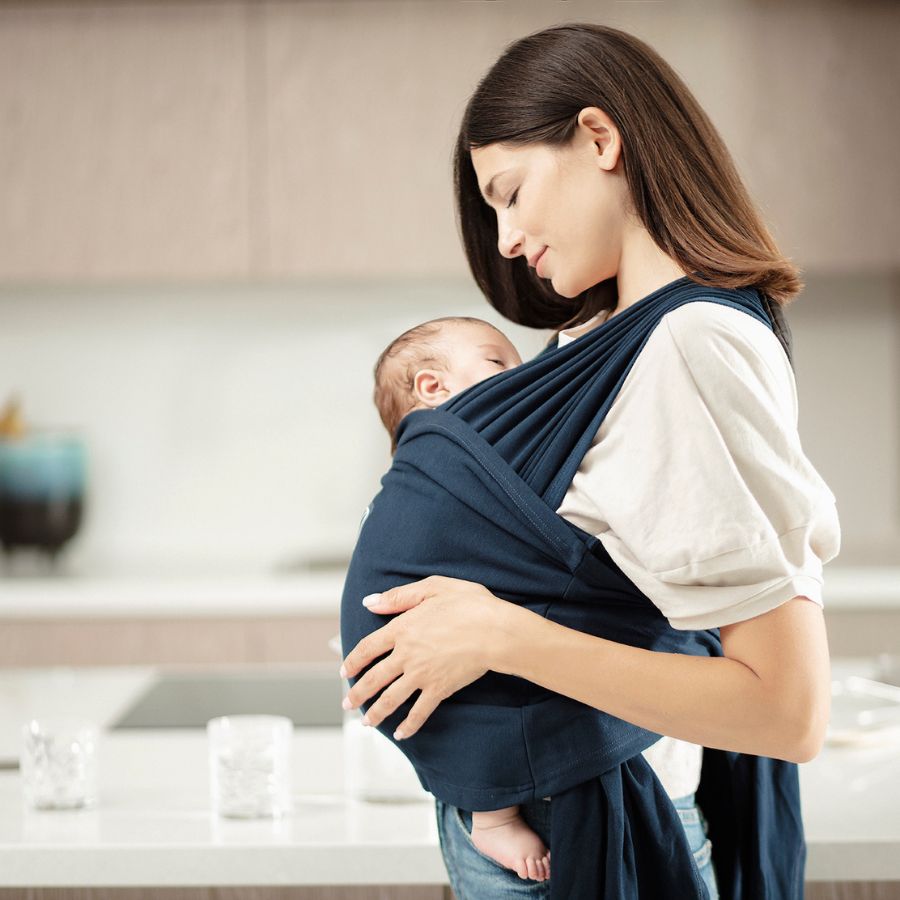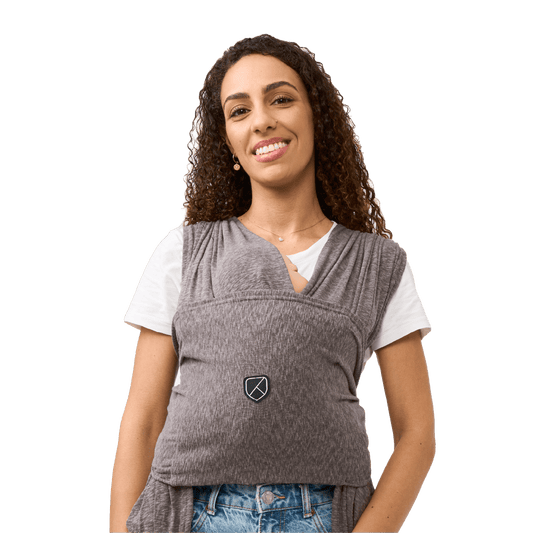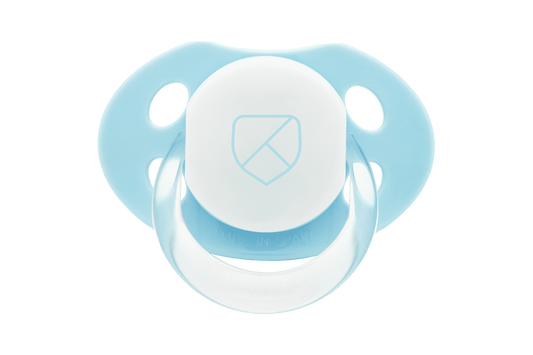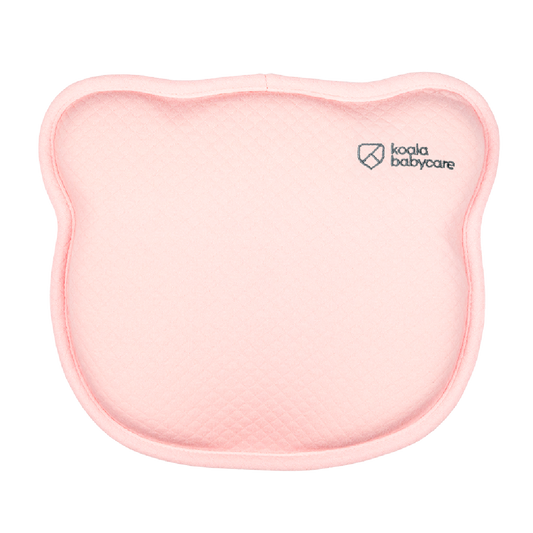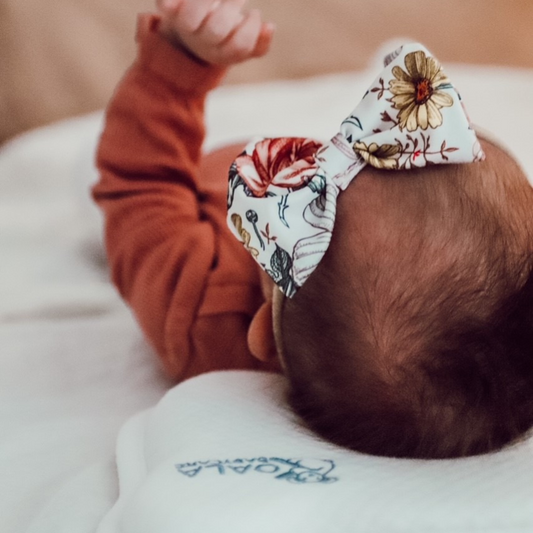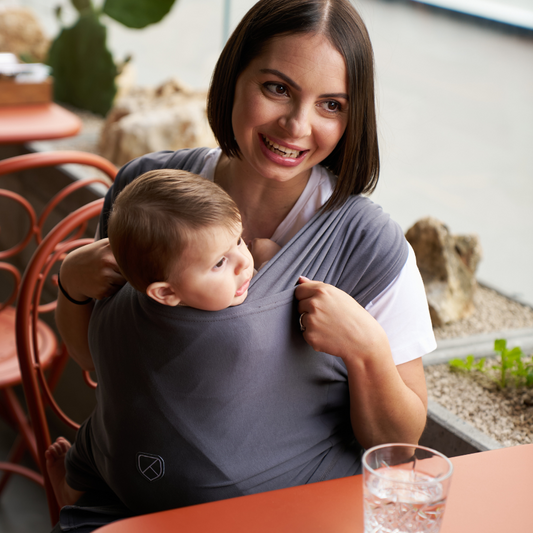Are you looking for the answer to one of the most asked newborn babywearing questions, "Should I buy a newborn wrap or a more structured baby carrier?" Parents are split into two categories: Team wrap and Team newborn carrier. However, in reality one is not better than the other; they can happily coexist together. Read our tips to find out which to choose between the two!
Babywearing newborn: why use a baby wrap or a baby carrier?
First, let’s start with a brief introduction to the practicality of babywearing and the countless benefits it offers.
Whether it's a baby wrap sling or a soft-structured carrier sling, a good babywearing support is not only about being able to walk around comfortably with your baby or enjoying that little bit of independence hands-free.
It's also about the physical and mental well-being of both baby and parent. There’s much less effort involved physically with babywearing than carrying your baby in your arms, and it also protects you against back pain. Your baby will enjoy close contact with mum and dad (and we already know how profound an infant’s need for contact is) as well as receive the right level of stimulation as they discover the world around them.
It helps strengthen the parent and baby bond, lay the foundation for a baby's independence and is a great way to prevent Positional Plagiocephaly, or flat head syndrome.
Is a baby wrap or a soft-structured carrier better?
A baby wrap is a fabric wrap about 5 meters long, which allows you to carry your baby using various tying methods that evolve as your baby grows. At first, you position your baby facing towards mum and dad's chest, then evolve to hip babywearing and finally on to back-carrying positions.
It's comfortable for both baby and whoever is using it as it offers maximum support, fitting snuggly around your baby, and helps the user distribute weight evenly.
An ergonomic baby carrier is a more structured support with shoulder straps and fastenings that is much easier to put on. It enables you to carry your baby on your front or back.
Let's take a look together at what factors help understand what’s the right type of baby sling for you.
Baby's age
A baby wrap is undoubtedly the most ideal support for newborns during the first weeks of life, and is also suitable for premature babies. This is because it wraps around infants snuggly, offering optimal support, and provides a newborn with close contact to mum and dad's chest rather than with the baby carrier itself.
Very young infants have a profound need for contact, primarily because they have just come out of their mum’s tummy, where they felt safe and secure, a stark contrast to the outside world they suddenly find themselves in, which is full of unfamiliar stimulation they aren’t able to deal with yet.
Being inside a baby wrap, belly-to-belly with mum (or dad, even) makes a baby feel protected again just as if they were inside the womb. That's why babywearing has the power to soothe even the fussiest of babies. Physical contact doesn’t spoil a child, it helps them grow up to be confident and independent.
As an infant grows, he or she becomes more active and moves about more. That's when a more structured baby carrier, which allows babies to move their legs, arms, and head around freely, may be more comfortable for them.
You should also consider that a baby wrap respects a newborn’s physiological position, keeping their back curved and their legs bent in a M-shape. This promotes correct motor development.
The same isn’t true of all baby carrier models, although some include an insert enabling them to be used with newborns.
Baby’s weight
A baby's weight must also be taken into consideration, as different slings are suitable for up to a certain number of kilograms.
While it is true that structured carriers can be used for longer, stretchy wraps are suitable for use up to when your baby weighs 9-12 kg.
Baby carriers offer a more rigid and structured support and are therefore less snug than a wrap, which is why they can be used to carry babies up to 20-22 kg in weight. This, of course, varies from model to model. Some are indicated for use up to 15 kg, while the "toddler" type carriers, which are larger and have a higher back support, allow for babywearing of children up to 5 years of age.
Practicality of use
A baby carrier is much easier to use: two clicks and you’re good to go, ready to explore the world!
A baby wrap, on the other hand, requires a teeny bit more time to put on, as well as a willingness to try your hand at the various tying methods. Not all parents feel suited to this traditional babywearing method, although those who do try it, find a lot of satisfaction.
Have a think about what you’re looking for in a baby sling and you’ll find the right support to suit your needs: do you like new challenges, taking time to do things slowly and properly, or are you always in a rush and looking for a baby sling which is quick and easy to use?
Well, there’s always a third option! Koala Cuddle Band, is a baby carrier wrap that simply slips on over your head just like a T-shirt. It is a pre-tied stretchy wrap with all the convenience of a baby carrier. So you don’t have to compromise.
Pros and cons of baby wraps and baby carriers
Let's briefly recap the advantages and disadvantages of using baby wraps or baby carriers, to ensure you have all the information you need to make the best possible choice for you.
What’s our advice? Use both! A baby wrap during your baby’s first few months of life (perhaps an ultra-easy-to-use type like Koala Cuddle Band), and then switch to a slightly more structured baby carrier as your infant grows.
Pros of a baby wrap
- Can be used from birth, even with premature babies.
- Offers close contact between parent and baby, enhancing the bond and fulfilling a newborn’s primal need for physical closeness.
- Being wrapped snuggly in soft fabric, offers a perfect fit for both baby and parent.
- Practical to take with you wherever you go as it takes up little space and is lightweight. Simply pop it in your baby bag.
Cons of a baby wrap
- Not instantly super-simple-to-use, especially at the first few attempts. A little practice is needed to learn the various ways to tie. Once mastered it will become much easier!
Pros of a baby carrier
- Extreme ease-of-use, it slips on and off in seconds.
- Sturdiness, offering you a sense of stability of your baby.
Cons of a baby carrier
- Generally, not suitable for newborns or very small babies, as they don’t respect a young infant’s natural physiology (their curved back and their frog-leg position).
- More rigid than a wrap, it is less snug for a baby and offers less physical contact between parent and baby.
Whether you choose a baby wrap or a baby carrier, the most important thing is to ensure whatever you decide, it favours healthy babywearing.
Starting with material quality and ergonomics: natural, organic fabric respects a baby's delicate skin, while an ergonomic support is essential for promoting correct motor development in young babies.

